Find a book

A Book a Month
We can send a book a month for six or twelve months - the perfect gift. More »

Café Music
Listen to our album of Café Music while browsing the site. More »

A parallel in pictures to the world of Persephone Books.
To subscribe, enter your email address below and click 'Subscribe'.
4 January 2018
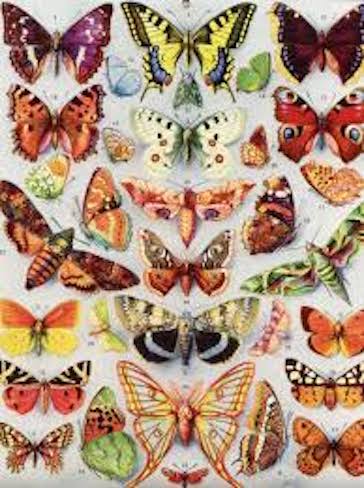
And finally it will be these butterflies in July.
3 January 2019

And this will be the illustration accompanying October.
2 January 2019
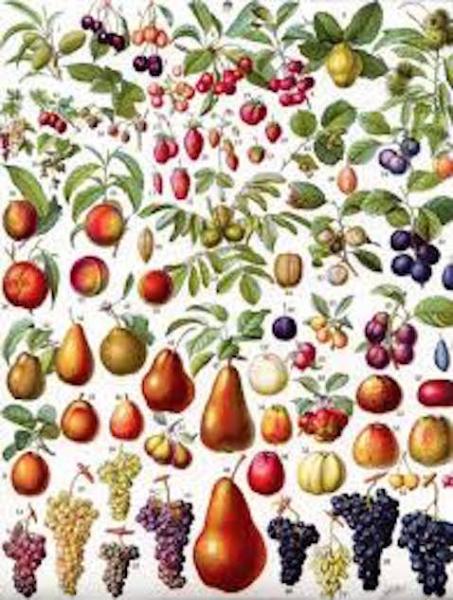
We have always loved the Mary Evans Picture Library, which often supplies pictures for the Biannually and Catalogue. This year they have sent a beautiful calendar. It’s the ‘decorative full-page colour plates produced for the Petit Larousse, a French-language encyclopaedic dictionary. First published in 1905, it features excellent reproductions in colour throughout. The majority of the plates in the calendar are the work of Adolphe Philippe Millot, whose natural history plates are vibrant, accurate and impeccably arranged, squeezing in as many species, varieties, shapes and colours as the page would allow.’ Here is September.
21 December 2018
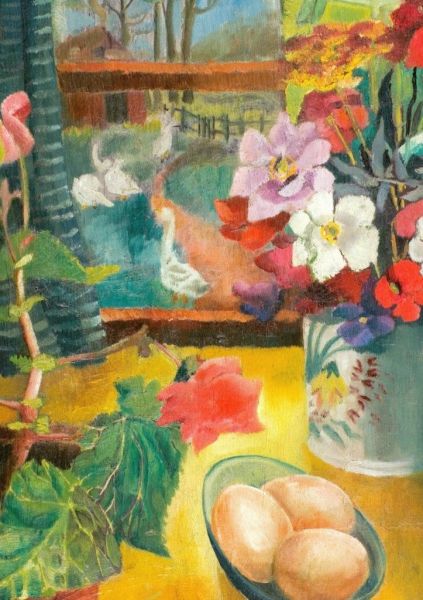
At the end of a pretty turbulent and upsetting year, with the future still a total blur (to the extent that we don’t know if we can print our books in Germany if Brexit happens and therefore if we will be able to continue publishing at all – since no British printer is capable of printing our books) we thought a soothing and beautiful but essentially domestic picture was needed as the last one of the year. Something like this painting, (Eggs on a Table by Dora Carrington c. 1924), set beside this week’s other four paintings from the Liss Llewellyn exhibition, used to represent the very best of Britain: four domestic scenes and among them a Jewish refugee who looks forlorn but nevertheless we know he was taken in tenderly and warmly by the English. All these wonderful values seem to be submerged by the terrible political infighting which we have to gaze on with horror every day. Do read these letters in the Guardian yesterday and the day before: they say it all eg. ‘The poignant letters from our friends in Europe (19 December) brought tears to my eyes – tears of sadness that we might leave Europe, and of utter frustration at the lunacy of Brexit, the huge cost and opportunity lost of the last two wasted years of negotiation, the malign over-influence of the ERG, and the stubbornness of May and Corbyn. Please, someone tell me what I can do.’ If only there was an answer. However, despite all this, we naturally wish everyone a very, very Merry Christmas. The shop re-opens on January 2nd. All fingers crossed that it will be a Happy New Year. And thank you to every single reader of the Post for your support during the year.
20 December 2018
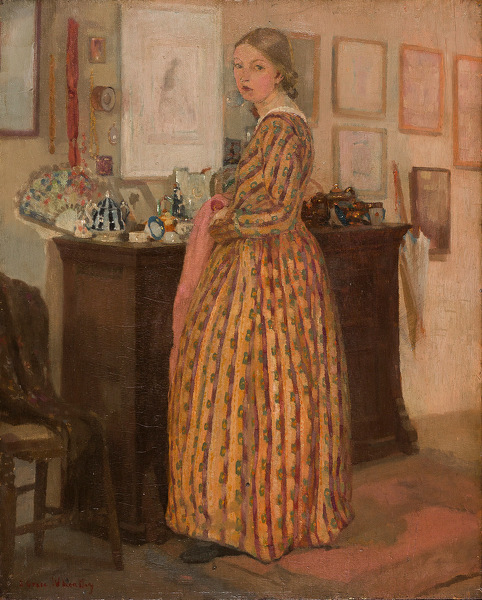
Griff Rhys Jones writes so eloquently, far more eloquently than an actual art historian would, in the Liss Catalogue about The China Cupboard 1910 by Edith Grace Wheatley (1888-1970) : ‘I have very few pictures that I instinctively tracked down as soon as I saw them in order to see if I could buy them, and this is one of them. There are elements that I like. I like the Nicholson glints on the china and the lustre wear, though it is not Nicholson. I like the Vuillard colour range, though it is not in the style of Vuillard. It is a little too controlled for that. The detail and the sense of pattern is slightly naïve. I like that too… There are no ‘isms’ at work here. And no critic is going to get terribly excited, because it doesn’t kick art history down the road at all. But it is completely of its period. It tells you about the taste of the sitter – in the rug, the china, the paintings on the wall, and more than anything the dress. This is the interior and a person before the First World War. And it is feminist. We do not feel that she has been painted because she is pretty. Though she is. She has been painted because she is a person. In that way, it is brilliantly ‘ordinary’. With echoes of Ginner and Whistler. The white print is the only odd bit. The perspective seems wrong. And I wonder if it was entirely finished. Anyway, as a little slice of English history and period it is satisfying. And the dress is just great. You know, I think she made it herself and that is the point of the picture.’
19 December 2018
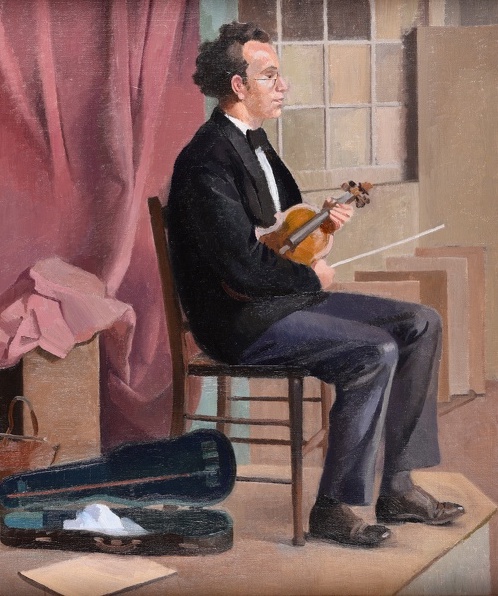
This is such a poignant and expressive painting – it’s by Phoebe Willetts-Dickinson and was painted in 1939. The commentary in the Liss Catalogue here says that the artist ‘was religious; indeed, in 1966 she became the first Deaconess in the Church of England. As a feminist she campaigned for the ordination of women, but over and above this she was concerned with social justice, and she spent six months in jail for civil disobedience. Painting was ultimately not enough… Her picture shows an abandoned man. He is on the stage, but on the very edge of it. The plight of the Jews should have been on the world stage, but who was paying attention? This particular lonely man has unpacked his case; its contents, a violin and bow on his lap, and he waits patiently. He is in a desolate corner. The stage curtain that would be pulled back for any serious performance is still down except for a mouse-door of entrance. There is just about room for him to have crawled in, but what next?’
18 December 2018
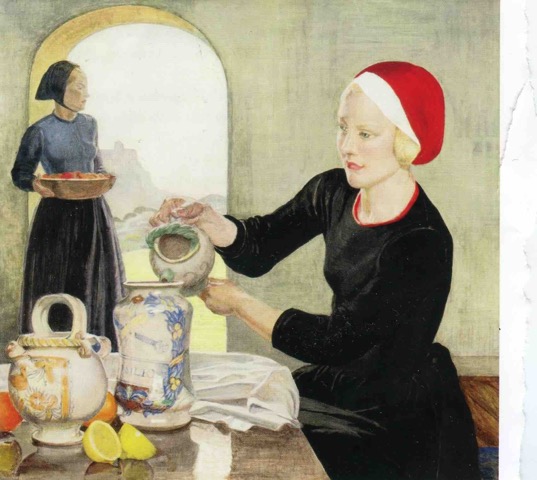 The Still Room by Averil Burleigh (1883-1949) was painted in 1928 in egg tempera. The woman on the right is Averil Burleigh’s daughter Veronica.
The Still Room by Averil Burleigh (1883-1949) was painted in 1928 in egg tempera. The woman on the right is Averil Burleigh’s daughter Veronica.
